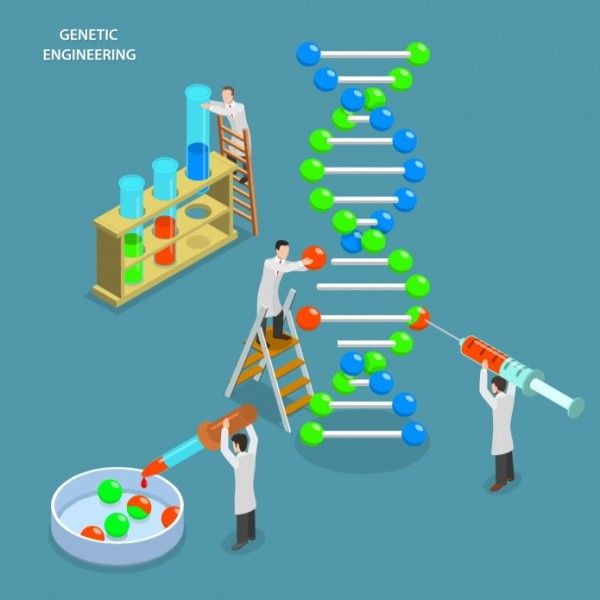
Genetic Engineering protocols

The artificial modification of a plant or animal’s DNA. Genetic engineering biotechnologies have existed since the 1970s, when scientists first began to explore the area of manipulation and alteration of the genome of animals. However, early forms of genetic engineering actually began with the domestication of animals, such as the dog. However, today genetic engineering represents a hugely profitable industry, with a huge future of possible uses.
This can involve adding, deleting, or modifying specific genes or DNA sequences to achieve desired outcomes.
How can Genetic Engineering be useful?
This modification of a plant or animal’s genome can be of use in many different areas. For instance, a plant’s genome can be modified in order to create a crop that is resistant to a certain disease, ensuring that farmer’s crops are protected, thus ensuring a good harvest.
In animals, the artificial modification of the genome allows scientists to focus on single genes and identify their potential benefits or negatives. For instance, thanks to genetic engineering scientists have been able to introduce beneficial genes into animals, such as the so-called Enviro-Pig™, which emits far less phosphorous than a non-engineered Pig, lessening its effect upon the environment. With the continuing development of these technologies, and their potentially beneficial impact upon human life, genetic engineering certainly has a huge future.
How does Genetic Engineering work?
Essentially, scientists have established a way in which they can unravel the strands of a cell’s DNA code, allowing them to identify single genes and analyze their uses and benefits. When a gene with a potentially desirable trait is found, it is then extracted from the DNA strand and used alongside differing, unrelated genes in order to construct what is known as an ‘insertion package’. This is then inserted into an organism’s cell and the effects of the introduced gene are analyzed to evaluate its benefits or disadvantages.
Genetic Engineering Protocols
There are a number of different protocols and methods that can be used in genetic engineering in plants and animals:
- Microbial Vectors
This technique uses agrobacterium tumefaciens, a pathogen which, when it infects it hosts, transfers some of its own DNA into the host cell. The genes of this DNA are then adopted by the host plant and expressed, infecting the host. In the 80s a new strain of this was developed that did not have the disease causing genes. Using these strains, with new DNA in place of the disease genes, scientists were able to develop new strains that gave cells of plants new genetic material.
- Microprojectile Bombardment
By adhering specific DNA to microscopic pellets, which are then shot into the plant cells, DNA can be delivered. This represents an efficient means of DNA delivery, particularly in species like cereals.
- Electroporation
Plant protoplasts are stimulated by an electrical impulse to absorb macromolecules from fluid. By giving the protoplast culture medium known DNA, then stimulating with electricity, the cell membrane becomes destabilized, letting DNA into the cell.
- Microinjection
This is a labor intensive and largely inefficient means of genetic engineering. DNA is injected into cells, some of which survive and take in the injected DNA.